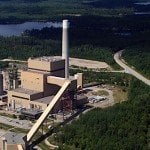The generation of power from hydro, wind, solar and other renewable sources will exceed that from natural gas and double the output from nuclear by 2016. The International Energy Agency reported yesterday at a conference in New York that renewables are now the fastest growing power generation sector and will grow another 40 per cent in the next five years. By 2018, renewable electricity generation will account for almost a quarter of all global power.

OECD member countries are still driving the growth, the IEA report says, but non-OECD countries are becoming increasingly involved. In fact, one of the factors that is driving the growth in renewables is increased investment in emerging markets like China, where renewables help supply the demand for electricity while “contributing to climate change mitigation,” the report says. China and other non-OECD countries will account for two-thirds of new renewable power generation between now and 2018. The growth in China and in these other markets will more than offset the slower growth taking place in Europe and the US.
Another factor at play in the rise of renewables is the fact that they are becoming more cost competitive. Wind competes well with fossil fuels in markets like Brazil, Turkey and New Zealand, the IEA says, and solar does well in markets with high peak prices for electricity, where distributed photovoltaic generation costs can be lower than retail electricity prices.
Hydroelectric power, which now accounts for roughly 80 per cent of the world’s renewable energy, will continue to dominate. Solar power, however, which had been growing at an annual rate of 45 per cent for the last fifteen years, is now projected to slow to just 25 per cent annual growth.
Biofuels will play a slightly larger role in transport and in renewable heat, but their use is increasing at slower rates than renewable electricity. Biofuels output should account for nearly 4 per cent of global oil demand for road transport in 2018.
Present fossil fuel dependence unsustainable
In her comments at the New York renewable energy finance forum where the IEA report was released, executive director Maria van der Hoeven said that current world energy trends remain “clearly unsustainable,” rooted as they are in fossil fuels. The IEA’s carbon intensity index, which measures the number of tonnes of CO2 that are emitted for each unit of energy supplied, has not changed in twenty years, despite new technologies and international efforts.
In some countries, which she did not name, the competitiveness of renewables is hampered by subsidies to fossil fuels, which the IEA estimates were six times higher than global incentives for renewables.
Nevertheless, the rapid growth of renewables represents a “bright spot in an otherwise bleak assessment” of the world’s progress toward cleaner energy.
However, policy makers need to avoid making decisions that lead to investor uncertainty and volatility, Van der Hoeven insisted, saying that the main challenge facing the renewable energy sector, the “public enemy #1 for investors and the most important barrier to renewable energy deployment, is policy uncertainty.”
Van der Hoeven warned that governments should not use difficult economic conditions as an excuse to cut back on support for renewables. No country, she said, can afford not to have renewables “as a fundamental pillar” of its energy portfolio.


































